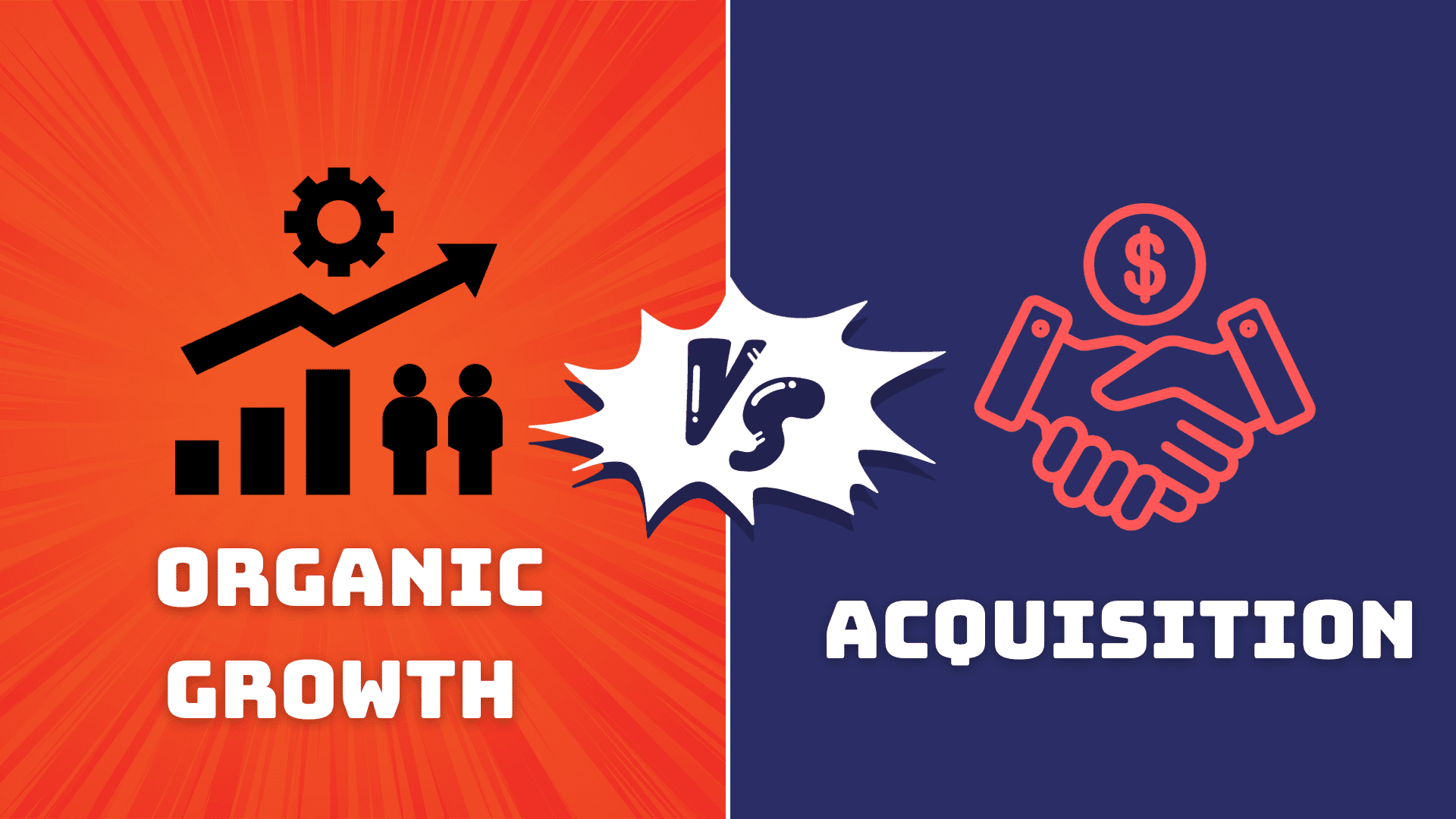Every business wants growth. Growth can happen in many ways (e.g., entering new markets, developing new products, or increasing sales in existing markets). All these events can happen either in isolation or combination, and they can all help businesses grow. All these forms of growth are organic forms of growth.
Mergers and acquisitions (M&A) are another form of growth that can increase and help a business reach a new market or niche.
This blog post will discuss organic growth, acquisition, and the difference between these two.
Organic Growth
The capability of a business to expand through its internal operations and its own resources is called organic growth. Organic growth is natural business growth.
A business can grow organically in the following ways:
- Selling more products to the existing market
- Selling new products to the existing market
- Entering a new market with an existing product
Note that organic does not mean that no effort is required from the business to increase sales and presence. Businesses develop many strategies to achieve their growth objectives, such as marketing promotion, competitive pricing, advertisement, etc.
This type of growth is vital for business growth, and it also builds confidence in stakeholders regarding the soundness of business processes. Organic growth indicates how a business organically adds value to the customer; this is purely internal growth.
An organic growth strategy requires effort and investment.
Example of Organic Growth
For example, Google sells its mobile phone, “Google Pixel,” in Japan. In 2023, it accounted for 12% of sales in the country, six times more than the last year. During the same period, its competitive product (iPhone) market share sales slumped to 46% from 58% a year earlier.
This is an example of the organic growth of Google. This is a vital performance statistic that shows if a business can develop organically, increasing sales and market share by relying on its own capabilities.
Acquisitions (or Merger)
Mergers and acquisitions can help a business grow quickly in both new and existing markets with new offerings. This decision is costly and strategic, but it can provide faster results. Sometimes, penetrating a new market through mergers and acquisitions is cheaper and easier than organically entering a new market with an existing product portfolio.
Acquisition and merger is a lengthy and complex process where two businesses with different cultures, processes, and products amalgamate. This emotional process can involve layoffs and changes in roles and responsibilities.
Sometimes, the acquisition does not initially bring positive results due to complex processes and procedural and cultural alignment. If proper attention is not given to this alignment, then the acquisition can fail and cause a loss of revenue for the business.
Takeover is another name of acquisition.
Example of Acquisitions
One of the most famous acquisitions in U.S. history is the acquisition of Time Warner by AOL (America Online) in 2000. This acquisition was one of the largest and most high-profile corporate mergers ever. AOL, a leading internet service provider and online platform, acquired Time Warner, a massive media conglomerate with assets including Warner Bros., HBO, CNN, and Time magazine.
Organic Growth vs. Acquisition
The following table shows the key differences between organic growth and acquisition:
| Aspect | Organic Growth | Acquisition |
| Definition | Achieving growth internally | Achieving growth through external means by purchasing another company |
| Growth Source | Internal development and expansion | External purchase of an existing business or its assets |
| Growth Speed | Generally slower | Generally faster |
| Control | Full control over strategy and pace | Immediate control over the acquired company, but integration challenges may arise |
| Risk | Lower financial risk | Higher financial risk due to upfront costs and integration challenges |
| Customer Base | Built over time through marketing and customer acquisition | Acquires an established customer base |
| Culture | Maintains an existing organizational culture | Potential for cultural clashes during integration |
| Innovation | Focuses on internal innovation and product development | Can bring new products, technologies, or expertise quickly |
| Cost | Generally lower upfront costs | Typically, higher upfront costs (e.g., purchase price and integration expenses) |
| Synergies | Limited synergy opportunities | Can create synergies by combining resources, expertise, and customer bases |
| Integration Challenges | Fewer integration challenges | More integration challenges (e.g., blending corporate cultures and operations) |
The choice between organic growth and acquisition depends on the business goal, availability of resources, and circumstances. Some companies may combine both strategies to achieve their growth objectives.
Which is the Best Growth Method?
There is no best growth method; it depends on the businesses and their goals, market conditions, funding availability, niche types, audiences, etc.
If the business has the best products, it can enter new markets, sell its products, and increase growth. However, if the business has funds and wants to enter a new market with new products, it can buy a company with an existing market share to quickly grow in the new market.
Both methods require a business to have a robust growth plan, whether organic growth, acquisition, or combination. A growth plan identifies and prioritizes the opportunities the business can realize quickly with available resources.
Conclusion
Growth is the key to business success. It can be attained through organic growth or acquisition. It determines the business’s ability to perform and survive in a competitive marketplace. During acquisitions, a business buys another business and gains its market share. Organic growth occurs when a business grows from its own operations. A business’s capability to increase sales, revenue, and market share is a key indicator of growth.
